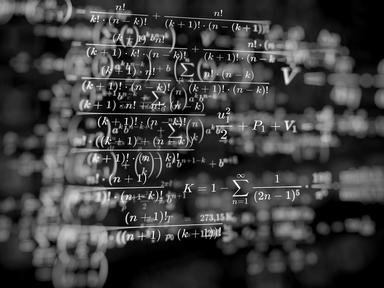Quiz Answer Key and Fun Facts
1. What is the exact value of pi?
2. The Pythagorean theorem is best proved by using:
3. What is the derivative of (pi*e)a with respect to x?
4. What is a recursive series?
5. In statistics, if you were faced with an exponential regression equation that was spitting out numbers too large to work with, you might do which of the following?
6. What is the relationship between the volume of a tetrahedron and a parallelepiped (3-D form of a parallelogram) that shares the same three defining edges/vectors?
7. Which is NOT a way to find area under a curve?
8. If a$b means ab-ba, a@b means a+b+ab, and a#b means a2-b2, what is 8#(3@(3$2))?
9. Which is NOT a fundamental trigonometric identity? (An identity is an equation that is satisfied for all defined values of x.)
10. Last one, so I'll go multivariable. What method could you use when trying to optimize a function subject to one or more constraints?
Source: Author
redsoxfan325
This quiz was reviewed by FunTrivia editor
crisw before going online.
Any errors found in FunTrivia content are routinely corrected through our feedback system.
